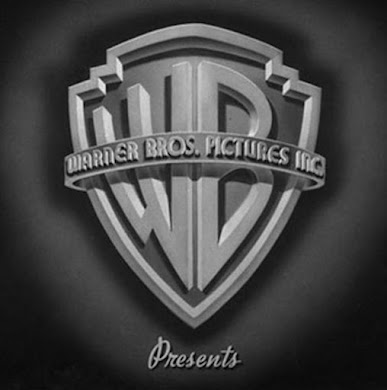The
Warner Brothers back catalog has been providing satisfactions pretty
much as far as I can remember - and it’s not done yet. A couple of their
less well known items have just come my way.
Jean Negulesco proved one of the more approachable Hollywood celebrities. When Alen Eyles and I did an interview, he had just made a film for Zanuck as both their careers were winding down and he noted with some amusement that his producer told him he was a play boy rather than a serious film maker. Negulesco brandished one of Charles Higham’s books which had been dedicated to him, giving him bragging rights when he showed it to Billy Wilder. Alen admired the scene in his Humoresque dissolving from brandy swirling in the balloon glass to breaking waves. Negulesco came back “I apologise. That was the most terrible thing I ever did in my life.” I didn’t fare much better, mentioning the nice The Voice That Shook the World short about the arrival of sound and being told that wasn’t one of his. Ever tactful, I said “Your name is on it.” Some time later I ran into him again and he spotted me and said “Hm, you told me 'Your name is on it!'.”
The Warner Brothers back catalog has been providing satisfactions pretty much as far as I can remember - and it’s not done yet. A couple of their less well known items have just come my way.
 |
| Jean Negulesco |
Romanian Negulesco had been an accomplished painter in Europe and gained a spot running second units in Hollywood, Captain Blood and notably the semi abstract retreat from Caporetto in the 1933 Farewell to Arms. Warners put him to directing the shorts used with their features on first runs until he launched with the 1944 Mask of Demetrios where old friend John Huston had drawn to his attention to the studio rights to the story after Huston beat him to The Maltese Falcon. It came as a surprise to find Negulesco had done an earlier feature, the 1941 Singapore Woman.
That one was doomed from the start. We all warmed to Brenda Marshall being stalwart in Whispering Smith but a do over on the part that Bette Davis got an Oscar for in Dangerous - fair crack of the whip Cobber!
The Steiner fanfare still ringing in our ears, we get mustached David Bruce come from up country to prepare for the arrival of fiancée Virginia Field and partying with associate Jerome Cowan, who comes closest to salvaging something from this wreckage. In Harry Cording’s seedy waterfront Crows Nest bar, Bruce spots bedraggled Marshall, a regular cause of trouble - flashback to him witnessing her rejected lover shooting himself in the home of her dad Gilbert Emery. Remembering Emory’s assistance (Bruce says) he scoops her up and carries her off to his rubber plantation where she gives ethnic maid Connie Leon a hard time and gets to smash her mirror reflection with a liquor bottle.
 |
| Hurrel Portrait of Brenda Marshall |
Featured players are mainly a drab lot with the few good people only making fleeting appearances - Tony Warde, Ian Wolfe and you have to be quick to spot Alexis Smith. Dialogue of the standard of “Gerald’s such a child.” or “You men and your code!” There are some pieces of badly matched lighting. Negulesco, on his first feature, is trying hard and he’s got the great Ted McCord on camera and an Adoph Deutsch score to prop him up. The comic Crow’s Nest bar brawl accompanied by Eva Puig doing her accelerating rendition of “Dark Eyes” gives hope but the director had a long way to go to the superiority of Johnny Belinda and Humoresque.
 |
| Warde, Marshall & Bruce. |
 |
| Show girls Include Marrion Byron, Sally Eilers, Jocelyn Lee & Alice White. |
forward the prospect of Alice heading up the late show there. She proves (surprise!) a hit - “The little girl who has danced her way into the hearts of Broadway.” The the nasties close in on Fred who somehow starts winning in the fixed game and has managed to scoop off Alice. The theatricals (“hoofers and acrobats”) are waiting at the engagement party but the bad hats plan on shooting Fred.
 |
| White - Broadway Babies. |
The flaws make watching the film more interesting if anything, highlighting the rapid progress Hollywood was making with the virtual monopoly.
Barrie Pattison 2021.


No comments:
Post a Comment